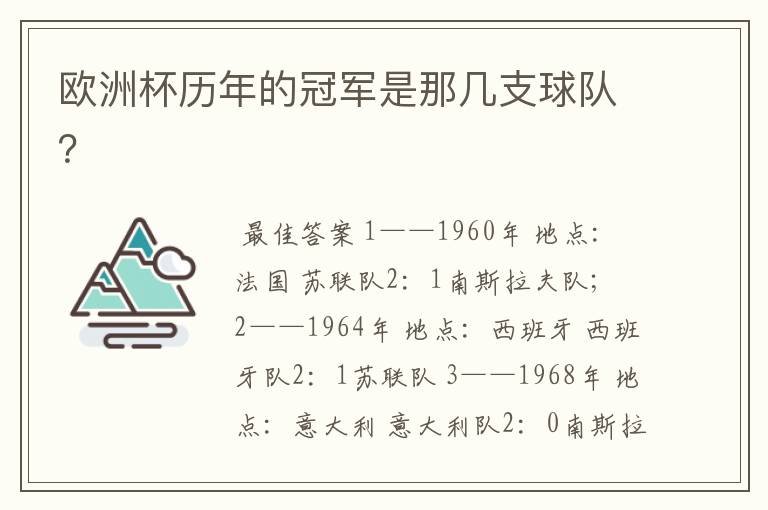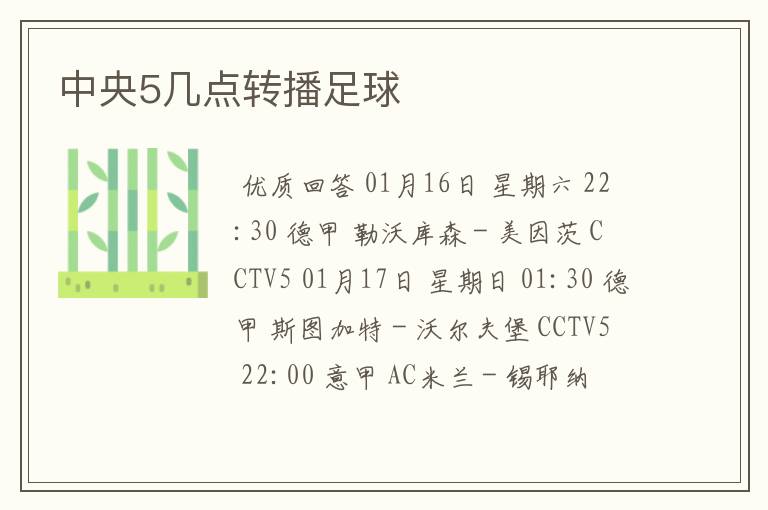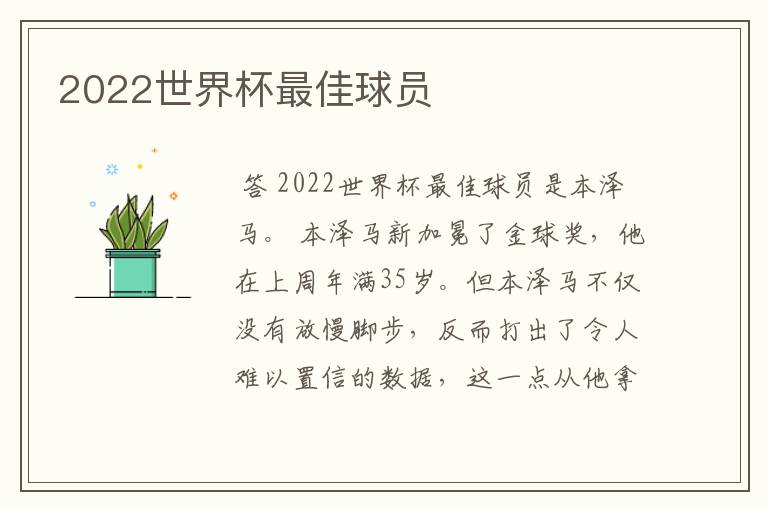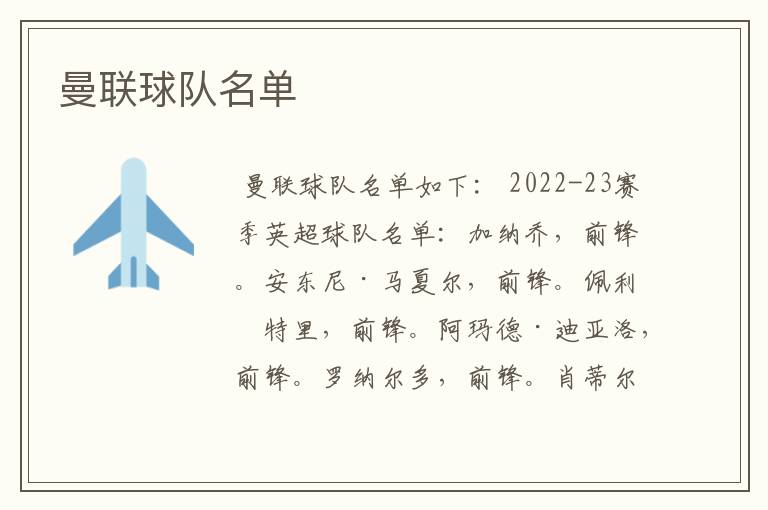┏ 美式足球介绍英文版 ┛西甲篮球介绍英文版
今天运困体育就给我们广大朋友来聊聊西甲篮球介绍英文版,希望能帮助到您找到想要的答案。
美式足球和英式足球英语和实际的区别
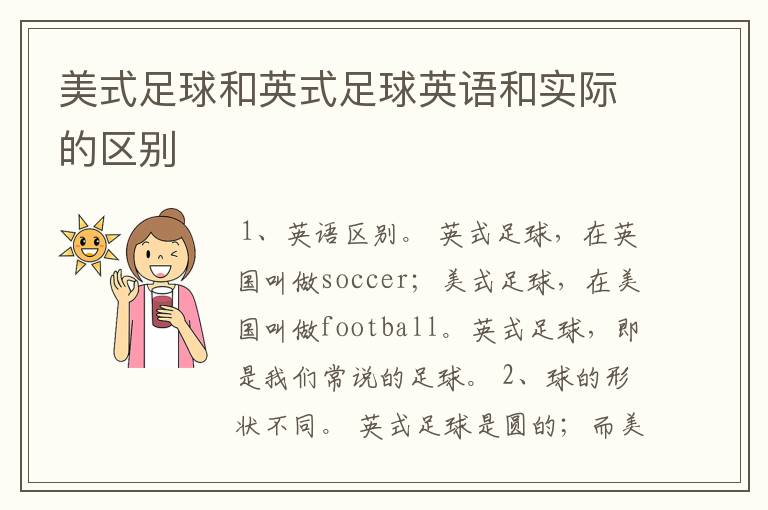
1、英语区别。
英式足球,在英国叫做soccer;美式足球,在美国叫做football。英式足球 ,即是我们常说的足球。
2、球的形状不同。
英式足球是圆的;而美式足球是长的,也就是常说的橄榄球。
3、运动员着装不同
美式橄榄球:头盔、护甲、护肘、手套、腰胯垫、腿垫、护膝以及球鞋、球服等全身装备,并且针对选手不同位置、赛场不同天气及场地条件进行护具使用及搭配。
英式足球:简单的短袖、短裤运动服、球鞋配备,整体装备较为简单。
4、比赛进行方式不同
美式橄榄球是一种冲撞型的运动。为了制止攻方向前推进,防守方须擒抱拦截持球的对方球员。因此,防守组员会透过身体接触,在合符球例的情况下把对手拦住。球例列明防守的擒抱者不能踢、打或绊倒对手。防守也不可拉面罩、用自己的头盔来拦截、或把对手抱起再摔下。
英式足球除规则另有规定外,凡球的整体从门柱间及横木下越过球门线,而并非攻方队员用手掷入、带入,故意用手或臂推入球门(守门员在本方罚球区内除外),均为攻方胜一球。在比赛中,胜球较多的一队为得胜队,如双方均未胜球或胜球数目相等,则这场比赛应为“平局”。
扩展资料:
1863年的英国足球规则:
1、场地长150码(137.16米),宽100码(91.44米)。球门由两根立竿组成,无横梁。
2、比赛开始前抛硬币选择球门或开球权。
3、当球被踢出边线外则为死球,由对方在出界地点将球直接踢入场内,恢复比赛。
4、当一队员踢任意球时,同队队员不得处在他与对方端线之间。
5、球从两竿之间无限高度穿过,就算进一球。
6、比赛中,不得用手、臂、肩触球,所有身体冲撞都是公平合法的,但禁止用手抱、推和用脚绊。
7、比赛中不许吵闹。
参考资料来源:百度百科-美式橄榄球
参考资料来源:百度百科-足球
美式足球的起源及规则
美式足球即橄榄球(Rugby football)起源于英国,原名为拉格比足球(Rugby football)。因为其球形很像橄榄,在中国即被称为“橄榄球”,拉格比(Rugby)其实是一个英格兰小镇的名字,在这个小镇上有一间叫Rugby School的公学,那是橄榄球运动的诞生地。 据传说,在1823年的时候,该学校举行了一次足球比赛,当时比赛十分的激烈,其中有一个名叫威廉·韦伯·埃利斯(William Webb Ellis)的16岁的小男孩,因为比分落后,情急之下,他竟然抱起地上的球就向对方的球门跑去。以后再学校的足球比赛中,抱球跑的情况经常发生。虽然在当时这个举动违反了足球的规定,却给人们一个新的启示,这种抱球跑的现象,给比赛增加了激烈竞争的对抗气氛,时间一长也就被人们接受了,成为一种合法的动作。就这样,一项新的,有利于身体全面发展,具有很高锻炼价值的运动,橄榄球运动,逐渐地从足球运动中派生出来了
1.为了符合联赛的需求,主队应有36只球供(室外比赛)以及24只球供(室内比赛)在比赛开始前2小时被裁判用压力测试仪测试过的比赛用球。12只被封在一个特殊盒子,直接由生产厂家送来的新球在比赛开始前两小时官员的更衣室内打开。 (II)扔硬币猜正反面 1.扔硬币猜正反面会在球场中央开球时的三分钟举行。双方队长在扔出硬币前猜正反面。赢的队可以挑选以下两个条件中的一个,而输的队就接收剩下的一个 (1)选择先开球 (2)选择防守的场地 2.在第下班场开始前,两队队长必须告知官员他们先前各自的选择,在上半场猜正面输的队有优先选择权。 (III)时间 1.球场内的计时钟是正规的,万一时钟停止或者运转不正常,边裁应该控制管理好场上的正确官方时间。 2.每一节15分钟,每节之间间隔2分钟,中场休息12分钟,除非另外被指定。 3.在球队叫暂停时,主裁开始计时,在1分50秒后吹哨,除非电视转播没有利用时间转播商业广告。在这种情况下暂停时间减少到40秒。 4.裁判会允许必须的时间给受伤球员或者修理球员的装备。 5.每个队每半场有三次喊暂停的机会。 6.每轮进攻中可有40秒的时间准备。 7.从开球球队持球后开始计时。 8.上半时的最后2分钟和下半时的最后5分钟是例外的—出界或犯规的时间将被除去。时钟回到出界前的时间。 9.对方球队可以紧跟着叫暂停,但是暂停时间减少到40秒。 10.当进攻方因人群的吵闹二未听到裁判的判罚时,他可以选择使防守方减少一次暂停机会或者判罚一个5码的点球。 (IV)突然死亡 1.对于一切NFL的比赛,突然死亡法是当在规定时间内出现平分时使用在加时赛中先得分的球队(一切方式)便自动获得胜利。 2.在规定时间结束时,主裁将在中场抛硬币并由客队队长先猜。 3.全场结束后将有3分钟的休息,再将近15分钟的加时,直到得分每两次加时之间休息2分钟。双方轮流分球。每个半场每队有3次暂停,被罚下的队员不能再次上场。 (V)脚开球 1.在上半场和下半场开场时,或者在目标得分和带球触地进攻(try)后,开球队要从该队的30码线处踢脚开球。脚开球是自由踢球的一种。 2.脚开球时可使用一个1英寸的球垫(踢目标得分、安全分或带球触地进攻(try)时不允许使用球垫)。由定位踢球员踢球。 3.脚开球不能得目标得分。 4.如果脚开球越过的距离没有超过10码或者没有被接球队触到,那么该脚开球被认为非法。一旦脚开球被接球队触到或者越过的距离超过10码,该球就成为自由球。接球者可以夺回球和推进球。踢球队可以夺回球,但不能推进球,除非接球者有控球权并落掉球。 5.如果脚开球在两条球门线内出界而且没有被接球队触到,那么球在离踢球点30码处或者在球出界的地方归属接球队,除非该球是在踢“自方踢球”时第一次出界。在这种情况下,踢球方被罚5码,再踢球。 6.如果脚开球在两条球门线内出界,但被接球队触到,那就在球出界的地方球归属接球队。 7.如果踢球队脚开球非法踢出边界线,或者在连续两个或的自方踢球中踢短任意球,那么接球队可在死球点,或球出界的地方,或非法触球点得到控球权。 (VI)安全分 1.除了脚开球外,另一种自由踢球是在踢安全分后的一个踢球。可采用腾空踢(而在脚开球中腾空踢不被采用)。 2.在踢安全分时,球队可采用腾空踢球、抛踢球(指抛起踢落地反弹球)和踢没有球垫的定位球三种方式得分。安全分后不能踢自由踢球而得分,即使一系列的处罚使球队处于这样的情况中。(只有在争球或合法接球后踢自由踢球才有可能目标得分)。 (VII)合法接球踢(Fair Catch Kick) 合法接球后,接球队可选择开球;或者在离开10码的地方的合法接球踢线踢“合法接球踢”,取得目标得分。在争球踢目标得分时所有一般规则都适用。踢球时开始计时(不允许使用球垫)。 (VIII)半场或全场球的最后阶段的犯规 1.防守方犯规,如果接受罚分,触地重来 2.进攻方犯规,触地不重来,触地无效 例外:接到球,犯规在拥球权转换后,不合法接触,进攻方不得分。 (IX)犯规点 1.四个基本犯规点: (a)犯规的地方 (b)前犯规点:开球的地方 (c)争球、后传或漏接处;犯规处罚惩罚处 (d)连续点:若在吹罚的过程中球又被推进,则开球处为吹罚处。 2.在争球线后进攻方犯规(除了在达阵区)则在前一个发球点开球的惩罚,如果球在达阵区,为安全球。 3.防守方持球或不合理用手的在争球线后的犯规,如果在线外犯规,罚码以线处计算。 (X)双重犯规 1.在交接占球权时双重犯规,则由不在交换之前最后得到占球权的队得球。 2.如果在交换后双重犯规,防守方在犯规处或死球处得球。 3.如果双重犯规中其中一个是不合格,犯规队员必须罚下,但不再罚码。 4.在交换拥球权前踢球者犯规,接球者在交换后犯规,接球者得球。 5.当一队倒地得分,打进球得分,额外分或安全分,另一个队的队员犯规,处以无运动员资格,或在倒地时动作不合理,则在开球时罚球。 (XI)紧急事件 橄榄球联合会成员及官员、雇员、队员、教练应观看每一场比赛,联盟会决定比赛是否继续进行当遇到意外事件,如严寒天气,自然或人类灾害,停电及观众干扰等因素。比赛会暂停,取消,延迟或终止当比赛的开始或继续会对参赛者和观众的安全产生威胁的情况发生时。 (XII)委员会办公室的权利 1.取消、延迟或终止比赛的权利仅被授于委员和团队主席。(其它团队办公室的代表和裁判员们可以临时暂停比赛;看下面的第3点和在“裁判的权利”下面的第1点),具体定义如下: *取消。取消一场比赛就是使它无效(无论在开始前还是开始后)而且不作重新安排它的准备或将它的分数与其它表现的数据包括进团队的记录中。 *延迟。延迟比赛就是(a)推迟它的开始时间到一个更晚的日期或(b)在比赛开始后暂停它并在更晚的时间作好重新开始的准备,暂停前的所有分数和其它表现数据被加入重新继续比赛后的得分和数据内。 *终止。终止比赛就是在60分钟完整比赛中结束它,以一次完整的比赛正式记入它,并不在晚点的时间做继续的准备。委员或团队主席可以在紧急时终止一次比赛。如果在他的观念里,它是合理的,(a)它不会改变最终的结果或(b)不会对其它任何参与的团队的竞赛项目产生不利影响。 *淘汰出局。除了有犯规情况外(参看上部分关于驱逐出场的规定),任何委员会成员、联盟主席及他们的代表,包括裁判员,都无权单方面宣布参赛队伍淘汰出局。淘汰出局只有在比赛因一方队伍的过错或拒绝参赛二无法进行时,才可被宣布。此时,另一队如果做好准备且希望参赛的,就可以2-0的比分获胜。 2.如果有意外情况发生,要求取消、延期或终止比赛的(参看上方规则),委员会办公室内确保在控制内的最高代表,可与委员会成员、联盟主席或比赛当日由联盟委任的负责官员协商,确认此项决定。(如果当日负责官员不在场,请用电话与之协商)。如果当天环境状况已确认,联盟代表仍应与气象局及联盟、俱乐部、体育场及当地政府的合适的安全部门人员协商。如果当时没有委员会办公室代表确保比赛在控制中的,裁判员就可全权负责。 3.在安全问题确保的情况下,委员会办公室代表可以在与裁判员协商后设置一段暂停时间,如果经过授权,也可将参赛者转移出赛场。委员会代表应确保观众、球员、比赛官员、观看区的非参赛人员及其他场上人员,例如摄影师和啦啦队员的安全。 4.如果可以的话,联盟官员办公室的代表们可以与2个参加的俱乐部的授权代表商却任何委员会联盟主席包括取消延迟或终止的决定。 5.如果委员会和联盟主席决定取消延迟终止一场比赛,由他的代表或比责当天的官员宣布,决定的方式例如用公用地址从裁判的无线话筒宣布,用主队公用地域或与电台和其它媒体联系。 (XIII)开赛或重赛的步骤 处理此类事务权利的要点如下:联盟人事部及裁判在比赛特殊紧急事件的影响中将按此步骤开赛或重赛。 1.因为某紧急事件,一场常规赛或季后赛无法按原定比赛时间开球或当天内延时开球,比赛仍需由委员会安排在随后的日期进行。 2.如果有紧急事件预计要在开赛后或比赛进行中发生(例如:一场即将到来的热带风暴),开赛时间不得被安排于提前的时间举行,除非有明显或充分的时间做一个有条理的变化。 3.所有被中止的比赛将在同一天重新开赛。所有的比赛如果被推迟至另以日期,将由从中止的时刻开始比赛。中止比赛时,主裁要宣布暂停并且记录下列数据:控球的球队,控球的方向,球在场时的位置、区域、距离及所的比赛时间,及任何相关于公正开赛的数据和信息。 4.常规赛推迟,将由委员会在原比赛日两天内重复,并且在同一赛场。如果无法在同一场地举行,委员会将安排一个合理的且可供选择的场地比赛。如果比赛无法在原定时间的两天内重赛,将被安排到下个星期的周二重复。委员会将安排如果两方比赛的球员可能因时间上的冲突而产生的不公平的比赛时间。(例如,周二已安排比赛) 5.季后赛的推迟,委员会将于原定比赛日后尽快在同一赛场举行。如果无法在原定赛场比赛,则由委员会安排合理的赛场安排重赛。 6.任何情况下,如果因为俱乐部的疏忽而导致比赛推迟,那此俱乐部承担主队的支出,包括委员会的批注,门票及电视转播的收入。
哪有一篇介绍足球的文章 涉及到它的历史 规则等各个方面
这里说的足球应该是英式足球的意思 football吧
我给你英文的介绍还附上相对的中文的意思
Football (also known as association football or soccer) is a team sport played between two teams of 11 players each. It is the most popular code of football and is widely considered to be the most popular sport in the world. A ball game, it is played on a rectangular grass field, or occasionally an artificial turf, with a goal at each end of the field. The object of the game is to score by maneuvering the ball into the opposing goal; only the goalkeepers may use their hands or arms to propel the ball in general play. The team that scores the most goals by the end of the match wins. If the score is tied at the end of the game, either a draw is declared or the game goes into extended time, depending on the format of the competition.
The modern game was codified in England following the formation of the Football Association, whose 1863 Laws of the Game created the foundations for the way the sport is played today. Football is governed internationally by Fédération Internationale de Football Association (FIFA). The most prestigious international football competition is the World Cup, held every four years. This event, the most widely viewed and famous in the world, boasts twice the audience of the Summer Olympics
-----
历史
Games revolving around the kicking of a ball have been played in many countries throughout history. According to FIFA, the "very earliest form of the game for which there is scientific evidence was an exercise of precisely this skilful technique dating back to the 2nd and 3rd centuries B.C. in China."[3] In addition, the Roman games Harpastum may be a distant ancestor of football. Various forms of football were played in medieval Europe, though rules varied greatly by both period and location.
Whilst football has continued to be played in various forms throughout Britain, the English public schools (fee-paying schools) are widely credited with certain key achievements in the creation of modern football (association football and the rugby football games - rugby league and rugby union football). The evidence suggests that during the sixteenth century English public schools generally, and headmaster Richard Mulcaster in particular, were instrumental in taking football away from its violent "mob" form and turning it into an organised team sport that was beneficial to schoolboys. Therefore, the game became institutionalised, regulated, and part of a larger, more central tradition. Many early descriptions of football and references to it (e.g. poetry) were recorded by people who had studied at these schools, showing they were familiar with the game. Finally, in the 19th century, teachers and former students were the first to write down formal rules of early modern football to enable matches to be played between schools.
The rules of football as they are codified today are effectively based on the mid-19th-century efforts to standardise the widely varying forms of football played at the public schools of England. The first ever set of football rules were written at Eton College in 1815. The Cambridge Rules were a code of football rules, first drawn up at Cambridge University in 1848, which have influenced the development of Association football (also known simply as "football", or soccer) and subsequent codes.
The Cambridge Rules were written at Trinity College, Cambridge in 1848, at a meeting attended by representatives from Eton, Harrow, Rugby, Winchester and Shrewsbury schools, but they were not universally adopted. During the 1850s, many clubs unconnected to schools or universities were formed throughout the English-speaking world to play various forms of football. Some came up with their own distinct codes of rules, most notably the Sheffield Football Club (formed by former pupils from Harrow) in 1857, which led to formation of a Sheffield FA in 1867. In 1862, John Charles Thring of Uppingham School also devised an influential set of rules.[4]
These ongoing efforts contributed to the formation of The Football Association (The FA) in 1863 which first met on the morning of 26 October 1863 at the Freemason's Tavern in Great Queen Street, London.[5] The only school to be represented on this occasion was Charterhouse. The Freemason's Tavern was the setting for five more meetings between October and December, which eventually produced the first comprehensive set of rules. At the final meeting, the first FA treasurer, the representative from Blackheath, withdrew his club from the FA over the removal of two draft rules at the previous meeting, the first which allowed for the running with the ball in hand and the second, obstructing such a run by hacking (kicking an opponent in the shins), tripping and holding. Other English rugby clubs followed this lead and did not join the FA but instead in 1871 formed the Rugby Football Union. The eleven remaining clubs, under the charge of Ebenezer Cobb Morley, went on to ratify the original thirteen laws of the game. The Sheffield FA played by its own rules until the 1870s.
The laws of the game are currently determined by the International Football Association Board (IFAB). The Board was formed in 1886[6] after a meeting in Manchester of The Football Association, the Scottish Football Association, the Football Association of Wales, and the Irish Football Association. The world's oldest football competition is the FA Cup, which was founded by C. W. Alcock and has been contested by English teams since 1872. The first official international football match took place in 1872 between Scotland and England in Glasgow, again at the instigation of C. W. Alcock. England is home to the world's first football league, which was founded in 1888 by Aston Villa director William McGregor.[7] The original format contained 12 clubs from the Midlands and the North of England. The Fédération Internationale de Football Association (FIFA), the international football body, was formed in Paris in 1904 and declared that they would adhere to Laws of the Game of the Football Association.[8] The growing popularity of the international game led to the admittance of FIFA representatives to the International Football Association Board in 1913. The board currently consists of four representatives from FIFA and one representative from each of the four British associations.
Map showing the popularity of football around the world. Countries where football is the most popular sport are coloured green, while countries where it is not are coloured red. The various shades of green and red indicate the number of players per 1,000 inhabitants.Today, football is played at a professional level all over the world, and millions of people regularly go to football stadia to follow their favourite team,[9] whilst billions more watch the game on television.[10] A very large number of people also play football at an amateur level. According to a survey conducted by FIFA and published in the spring of 2001, over 240 million people regularly play football in more than 200 countries in every part of the world.[11] Its simple rules and minimal equipment requirements have no doubt aided its spread and growth in popularity.
In many parts of the world football evokes great passions and plays an important role in the life of individual fans, local communities, and even nations; it is therefore often claimed to be the most popular sport in the world. ESPN has spread the claim that the Côte d'Ivoire national football team helped secure a truce to the nation's civil war in 2005. By contrast, however, football is widely considered to be the final proximate cause in the Football War in June 1969 between El Salvador and Honduras. The sport also exacerbated tensions at the beginning of the Yugoslav wars of the 1990s, when a Red Star Belgrade-at-Dinamo Zagreb match devolved into rioting in March 1990
--------
规则
Laws of the Game
Football is popular among children as well as adults.
[edit] Overview of the laws
Main article: Laws of the Game
There are seventeen laws in the official Laws of the Game. The same Laws are designed to apply to all levels of football, although certain modifications for groups such as juniors, seniors or women are permitted. The laws are often framed in broad terms, which allow flexibility in their application depending on the nature of the game. In addition to the seventeen laws, numerous IFAB decisions and other directives contribute to the regulation of football. The laws can be found on the official FIFA website.[13]
[edit] Players, equipment and officials
See also: Goalkeeper (football), Substitute (football), and Kit (association football)
Each team consists of a maximum of eleven players (excluding substitutes), one of whom must be the goalkeeper. Competition rules may state a minimum number of players required to constitute a team; this is usually seven. Goalkeepers are the only players allowed to play the ball with their hands or arms, but they are only allowed to do so within the penalty area in front of their own goal. Though there are a variety of positions in which the outfield (non-goalkeeper) players are strategically placed by a coach, these positions are not defined or required by the Laws.
The basic equipment players are required to wear includes a shirt, shorts, socks, footwear and adequate shin guards. Players are forbidden to wear or use anything that is dangerous to themselves or another player (including jewellery or watches). The goalkeeper must wear clothing that is easily distinguishable from that worn by the other players and the match officials.
A number of players may be replaced by substitutes during the course of the game. The maximum number of substitutions permitted in most competitive international and domestic league games is three, though the number permitted may be varied in other leagues or in friendly matches. Common reasons for a substitution include injury, tiredness, ineffectiveness, a tactical switch, or as a defensive ploy to use up a little time at the end of a finely poised game. In standard adult matches, a player who has been substituted may not take further part in the match.
A game is officiated by a referee, who has "full authority to enforce the Laws of the Game in connection with the match to which he has been appointed" (Law 5), and whose decisions are final. The referee is assisted by two assistant referees. In many high-level games there is also a fourth official (and in the world cup a fifth official), who assist(s) the referee and may replace another official should the need arise.
Playing field 球场的图片和注释见
=======================
中文附录:
足球是一项由两队参与的球类运动,每队最多共有10名球员及1名守门员出场比赛。目的是尽量将足球射入对方的球门,每射入一球才得到一分,当比赛完毕后得分最多的一队则代表胜出。足球比赛中除了守门员可以在禁区内利用手部接触足球外,球场上每名球员只可以利用手以外的身体其他部分控制足球(界外球例外)。
历史
有人认为足球是起源于中国,到后来才传到欧洲,也有人认为它是起源于中世纪时英国的一些农村。经专家、学者的考证和国际足联认可,足球最早起源地应是中国,古代中国的蹴鞠(蹋鞠)就是现今足球运动的雏形。这项活动据传可追溯至公元前2679年的“黄帝时代”,但在目前可见的文献里,最早确切可信的文字记载这项运动者,当属《战国策》和司马迁的《史记》,当时它以具有军事性和娱乐性两种面貌的活动而被记录下来。蹴鞠的“蹴”是代表射的意思,而“鞠”是则代表球,其后经过改良令蹴鞠慢慢普及,到了隋唐时代蹴鞠和佛教一起传到了日本,今日韩语及日语中仍可见称足球为蹴球的用法,便是受到中国的影响。
现时足球运动是世界上最受欢迎的体育运动之一。现代足球运动于19世纪中期诞生于英国,最早的职业联赛也在同地开始。此后,足球运动在全球广泛传播,目前,欧洲与南美洲被公认为足球水平最高的两大洲。其中巴西国家足球队是世界男子足球水平最高的国家足球队之一,欧洲的足球联赛也被认为是世界最高水平的足球联赛。
在英语中,随着地域不同,“football”一词有不同意涵。在英国, “football”指的是国际足联认可之“足球”;而美式英语中所称的“football”则是指“美式足球”(American football),亦称“美式橄榄球”;在澳大利亚, "football" 则指澳式足球(Australian Rules Football)。
美式足球英语
美式足球英语如下:
The boy who is speaking to Helen enjoys playing soccer.
正在跟海伦谈话的那男孩喜爱踢足球。
He plays either soccer or rugby.
他或是玩英式足球或是玩橄榄球。
近义词
association football
英 [əˌsəʊsieɪʃn ˈfʊtbɔːl] 美 [əˌsoʊsieɪʃn ˈfʊtbɔːl]
英式足球。
The London Football Association published the first set of rules in1863 and named the sport "association football".
1863年,伦敦的足球协会宣布了第一套足球规则,并把这项运动称为“英式足球”。
The presidency in question is that of FIFA, the global governing body of association football。
这个职位就是管理足球联合会的全球性组织国际足联。
今天的内容先分享到这里了,读完本文《┏ 美式足球介绍英文版 ┛西甲篮球介绍英文版》之后,是否是您想找的答案呢?想要了解更多,敬请关注www.zuqiumeng.cn,您的关注是给小编最大的鼓励。
本文来自网络,不代表本站立场,转载请注明出处:https://www.zuqiumeng.cn/wenda/448669.html
